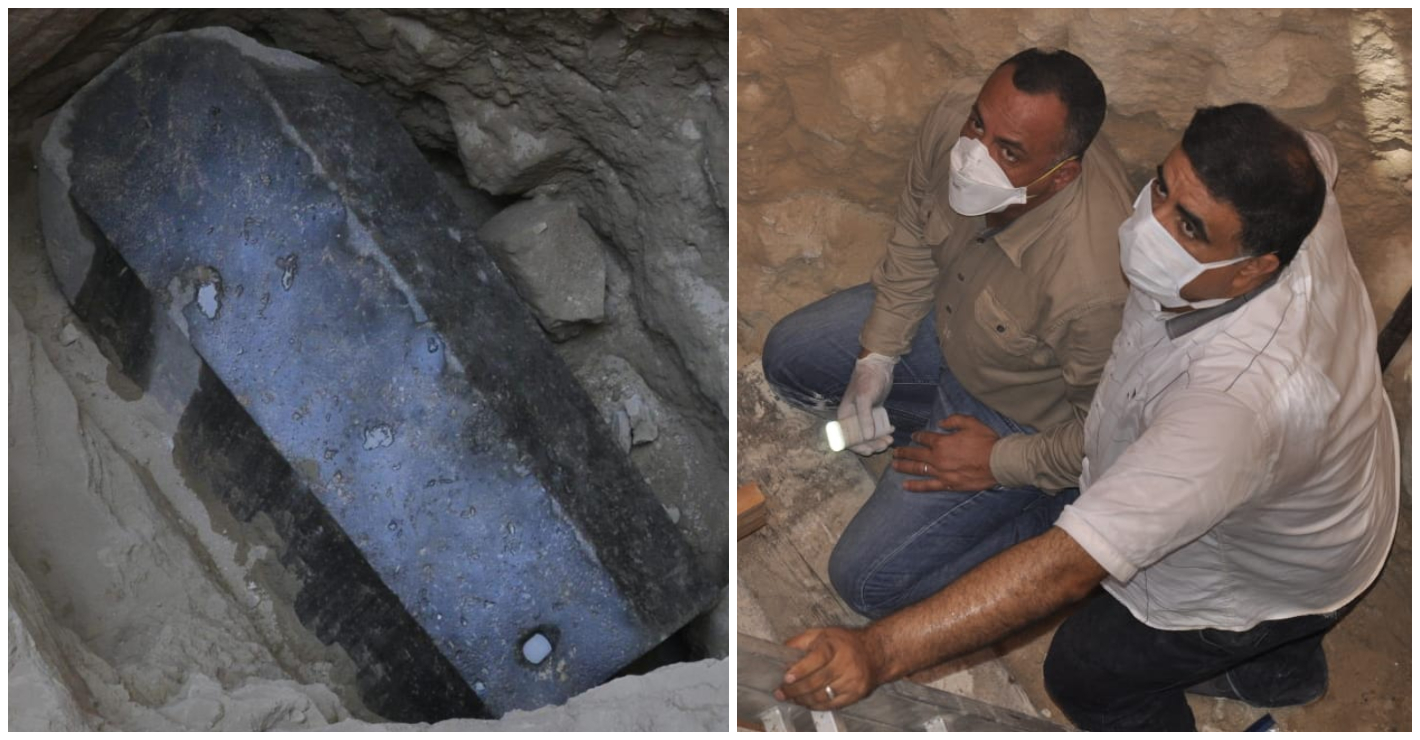
20 Jul “Cursed” Ancient Egyptian Sarcophagus Opened For The First Time In 2,000 Years
The Ancient Egyptians are one of the most fascinating people to have ever lived. To this day, much of their technology is unrivaled, even by the biggest feats of modern engineering, and their complex society has presented us with more questions than we are ever likely to answer. In fact, little is known about their Northern Kingdom situated in the Aleppo area of Syria.
That being said, the Ancient Egyptians left us with many well-preserved artifacts which have allowed us to piece together a lot of about who they were as a society, and one thing which has remained a source of continual fascination is their treatment of their dead, which involved elaborate funerary practices to ensure their immortality – especially among the elite.

The most famous example of these practices was found in 1922 with the discovery of Tutankhamun’s tomb. The young prince’s final resting place remains the best preserved of all the tombs in the Valley of Kings, but it, unfortunately, has gained notoriety because of the supposed curse which befell many of those who entered, resulting in a number of untimely deaths.

These deaths were attributed to what became known as the curse of the pharaohs. It promises misfortune to anyone who disturbs the mummy of an Ancient Egyptian person, in particular, a pharaoh. But despite this alleged danger, archeologists recently decided to open a 2,000-year-old sarcophagus in a tomb.
[[jwplayerwidget||http://content.jwplatform.com/videos/A1iX3oE2-sKUnNGKf.mp4||A1iX3oE2]]
Now, before you Google what a sarcophagus is, let me explain. A sarcophagus is a burial box made from limestone which, unlike a coffin or a casket, is designed to be displayed above ground and facilitate the speedy decomposition of a corpse.
The sarcophagus that was recently discovered is not only interesting because it is from the Ancient Egyptian era, but because of its size. It’s the largest ever sarcophagus found in the city of Alexandria.
Discovered earlier this month, it became a talking point among members of the archeological community who feared that it could be cursed.

Today, Alexandria is the second-largest city in Egypt and it was founded way back in c. 332 BC by Alexander the Great. It was for this reason that archeologists speculated that the newly-discovered sarcophagus belonged to this king.

This speculation was fuelled by the fact that the sarcophagus was found next to a white alabaster head of an unidentified man.

With such a potentially significant discovery on their hands, archeologists decided to fly in the face of the alleged curse and open the sarcophagus on July 19 and what they discovered inside was a surprise, to say the least.
Instead of finding a well-preserved mummy, archeologists were met with a grim sight: three skeletons bathing in sewage water – water which was a sinister red color, despite the bodies having decomposed thousands of years ago.
According to those who were present for the opening of the sarcophagus, the smell was unbearable.

Naturally, these skeletons were removed and examined in an attempt to ascertain who they were. Because they were not found with silver or gold metallic masks, small statues, amulets or inscriptions inside the sarcophagus, it was clear that they were not royalty. However, to have received the biggest sarcophagus in Alexandria, they must have been people of note.

Preliminary examinations of the skulls have suggested that they belong to three army chiefs – and one of them has a noticeable arrow injury. Experts also said that the sarcophagus had never previously been opened because it was covered in a thick layer of mortar, so this is the first time that these skulls have seen the light of day in over 2,000 years.

The Ministry of Antiquities has issued a statement about the find, revealing that the skeletons will be moved to Alexandria’s National Restoration Museum. While there, a cause of death and their exact historical era will be established.
However, the find has not been met with the revered fascination that you would expect from something this remarkable.
Oh no, instead of speculating about whether or not a curse similar to the one which apparently afflicted those who have disturbed Tutankhamun’s tomb would affect the archeologists, or opening up a discussion about other secrets the Ancient Egyptians have yet to offer up, people couldn’t help but comment on the liquid found with the skeletons.

Now, one man, in act of sheer insanity, has said that he wants to DRINK this sewage water. Innes McKendrick, a video games producer from Guildford, Surrey, has even created an online petition in a bid to make his dream come true.

Addressed to the “King of Skeletons, Egypt”, McKendrick wrote, “We need to drink the red liquid from the cursed dark sarcophagus in the form of some sort of carbonated energy drink so we can assume its powers and finally die.”
Surprisingly, McKendrick has garnered support and, at the time of writing this article, 142 people have signed the petition.

When asked by the Metro why he wanted to drink the “skeleton juice”, he simply said that he doesn’t want it “to go to waste.”
The post “Cursed” Ancient Egyptian Sarcophagus Opened For The First Time In 2,000 Years appeared first on Viral Thread.


Sorry, the comment form is closed at this time.